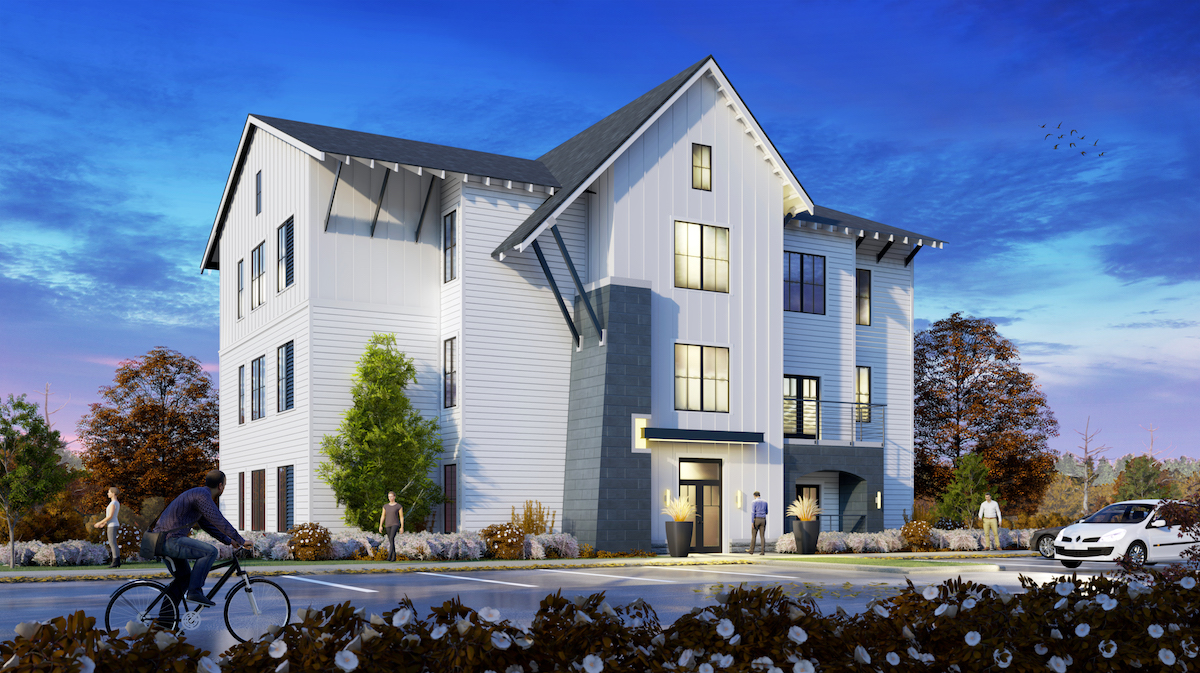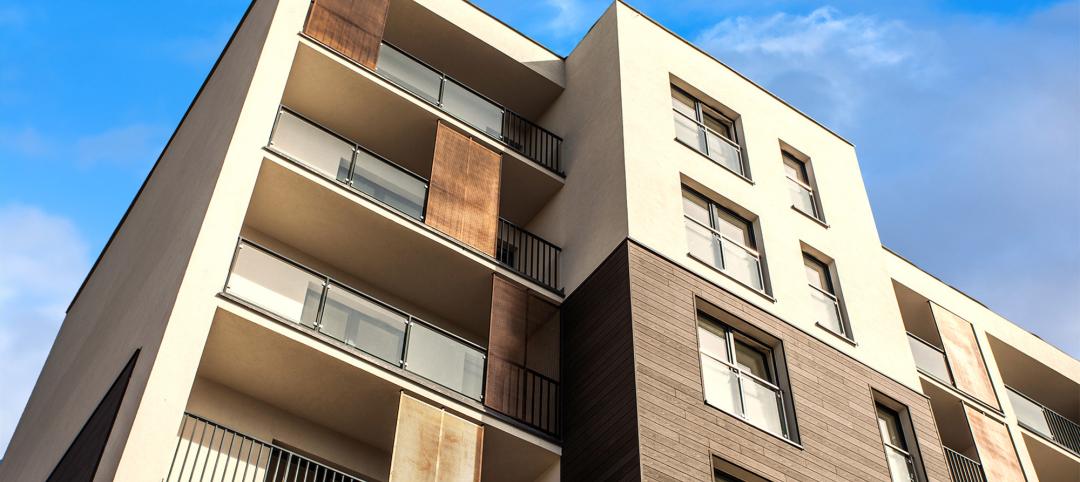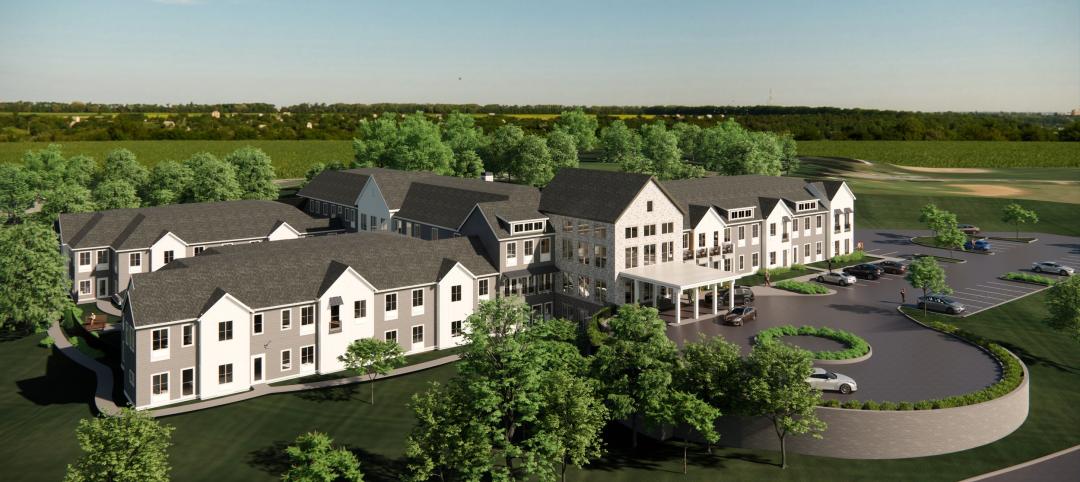Even before the coronavirus pandemic, national college enrollment had been declining annually for nearly a decade, according to estimates from the National Student Clearinghouse Research Center, which this fall will issue the first of nine quarterly reports that track the virus’s impact on higher education in the U.S. through fall 2022.
AEC firms with higher ed practices don’t need to wait for that initial report’s release to know the COVID-19 outbreak has had a devastating effect on new construction that includes student housing on college campuses. That’s particularly true of schools that have committed to online teaching at least until a vaccine emerges. (Fewer than one-quarter of the nation’s 5,000 colleges had committed to teaching primarily or completely in person this fall, according to the Chronicle of Higher Education.)
“Residence Life suffered a significant financial hit. Many argue the impact to the ‘sense of community’ was equally, if not more, damaged,” says David Damon, Principal and Higher Ed Practice Leader with Perkins and Will. That “sense of community” was further diluted when several colleges in Boston offered social distancing by extending their student housing to local hotels or apartment buildings.
The pandemic’s impact on campus life left some AEC firms despairing about an uncertain future. “These are turbulent times,” says Ronald J. Lauster, Jr., President of the construction management firm W.M. Jordan. “Until [higher ed] clients get a better sense of what the next few semesters will be like, we expect a sharp decline in the student housing sector.”
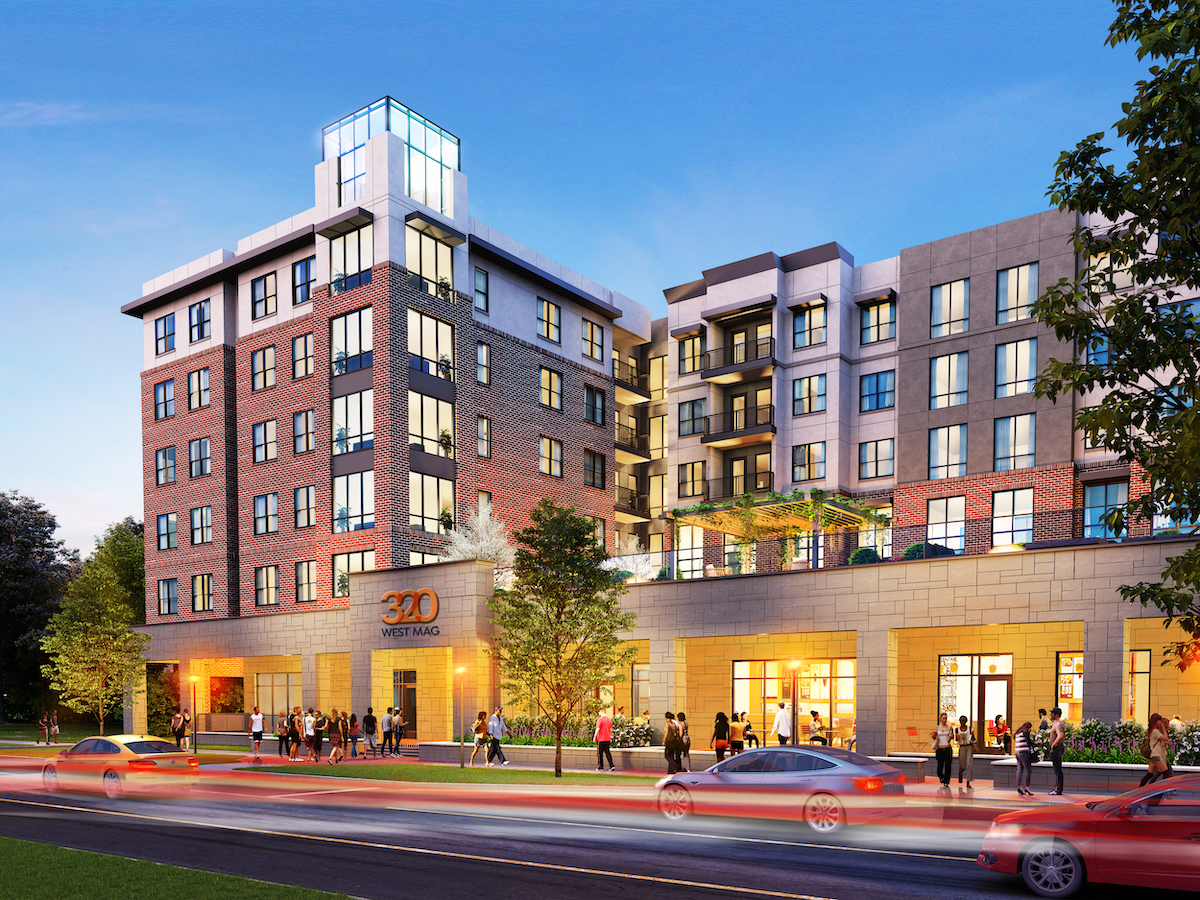
While on-campus student housing has stalled at some colleges, off-campus housing construction remains strong. Among Juneau Construction’s active projects is 320 West Mag, a 352,000-sf housing building serving Auburn University.
Ripley Bickerstaff, Director of Business Development at Hoar Construction, believes that while demand for post-secondary education in a traditional campus setting “will remain strong,” the virus’s spread has exacerbated trends—such as rising costs, onerous student loan debt, and the availability of less-expensive two-year training programs—that were sowing doubts about the value of the college experience. “Unless mitigated, I foresee a shift in culture from one that perceives a college education not as something to strive for, to something that’s simply not worth it.”
Still, AEC firms contacted for this article couched their gloom and doom scenarios by stating that there will always be a need for residence life that allows students to collaborate, socialize, and interact. Ken Salyer, HMC Architects’ Higher Ed Practice Leader, notes that while universities have been slowing down their active projects, community colleges with recent state funding and their own general obligation bonds “seem to be issuing RFQ/Ps at the same or increased pace as before the COVID-19 pandemic.
Salyer also sees more interest among higher ed clients in sustainability and ZNE projects, and an upsurge in investment in AV and IT equipment to accommodate online learning.
But none of the sources contacted expect online learning to completely replace the residential campus experience, “where students from the ages of 18 to 22 will want to continue their personal growth learning with a diverse group of their peers and professors,” says Sean Edwards, COO–Higher Education at Suffolk Construction.
“Alma Mater pride has to be accounted for here,” adds John R. Abisch, Principal with BSB Design in Charlotte, N.C. “There is still a huge need for student housing.”
Off-campus and reno projects move forward
To meet that need, AEC firms are adjusting. One of BSB’s recent projects is East Green Street Apartments in Ithaca, N.Y., a 200-unit building with ground-floor retail. Mixed-use components have become all but essential for off-campus student living. In this case, the building also targets young professionals, and reflects a trend in demand among college students for a more mature living style, says Abisch.
BSB has been entertaining discussions recently about amenities that are smaller to control how many students are in an area, or larger to accommodate social distancing. The firm also devised a Boutique Student Housing prototype that Abisch says aligns with the broader demand for buildings with fewer and smaller apartments that can be built just about anywhere.
The Massachusetts Institute of Technology’s South of Main Street development in Cambridge, Mass., includes a mixed-use graduate housing tower whose design, by Perkins and Will, features micro-apartments that nearly double the tower’s required unit density.
While AEC sources lament that many of their on-campus projects are delayed or postponed, off-campus student housing has been somewhat less affected by the virus. Three of Juneau Construction’s student housing projects are going up off campus: the $65.5 million, 640,000-sf Hub at Auburn, which when completed in July 2022 will serve Auburn University with 329 units and 909 beds; the $44.5 million, 365,000-sf Lumen, a mixed-used apartment building near Alabama University’s Birmingham campus, with 207 units and 474 beds, scheduled for completion next July; and the $72 million 320 West Mag, which will open next July in Auburn, Ala., with 201 units and 709 beds.
On-campus construction hasn’t stalled entirely: In September, William Paterson University in Wayne, N.J., opened Skyline Hall, a 90,000-sf 288-bed residence hall. The $40 million project’s team included Clarke Caton Hintz Architects, Dobco Group (GC), and Gilbane (CM). Boudreaux Group designed Campus Village, a $320 million multi-structure housing project that Juneau is building on the Columbia campus of the University of South Carolina. Once completed in 2023, this complex will have more than 3,700 beds, as well as office space, dining, and a Starbucks.
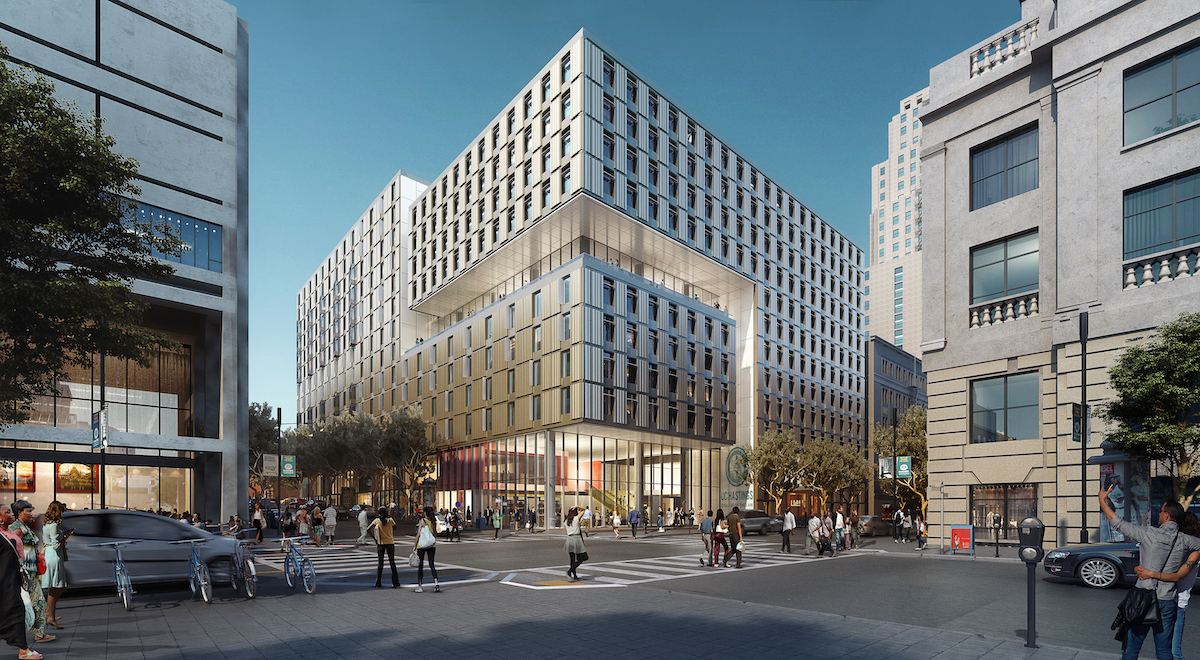
The Perkins and Will-designed University of California Hastings student housing in San Francisco will provide 656 new units with 668 beds for graduate students and faculty. It will include a sky lounge that comprises most of the building’s common spaces. Perkins and Will
The South Carolina project notwithstanding, Juneau anticipates more requests for on-campus renovation and repurposing of existing buildings than for new construction, says Eric Kerley, Sr., the firm’s Vice President of Operations.
In that vein, Texas A&M University recently tapped Hoar Construction to handle a comprehensive renovation of the HVAC system in Aston Hall, a four-story, 240-unit residence hall. To complete this project in just 11 weeks, Hoar co-hosted a Last Planner boot camp in partnership with the university’s Facilities Planning and Construction Team and its MEP design partner, JonesDBR Engineering. A full-size mockup was created off site in a nearby warehouse where products were delivered and where duct work was preassembled.
Clark Nexsen’s Student Life Practice Leader, Peter Aranyi, cites five reasons why universities are renovating student housing rather than building new: to reduce their costs and scheduling (renovation is generally 70-75% the cost of new construction), to add and enhance amenities, to improve their campus’s sustainability, to support campus compatibility, and to preserve historic buildings.
“COVID-19 has further complicated these capital project decisions, constricting budgets for private and public institutions,” explains Aranyi.
Cash-deprived schools seek out P3
With their normal revenue streams depleted, more universities are turning to public-private partnerships to help finance student housing projects. For example, the P+W-designed University of California Hastings redevelopment of a city block in San Francisco’s Tenderloin District will create a 668-bed mixed-use Academic Village, which is being delivered with the developer Greystar as a P3 project. Saint Mary-of-the-Woods College in Terre Haute, Ind., broke ground last July on a 49,070-sf, $15 million residence hall and dining facility for 92 students, which the school developed with Ohio-based University Housing Solutions.
The University of Massachusetts Dartmouth’s new housing and dining facility for 1,210 students, a Suffolk project, also was a P3. “Public-private partnerships in higher education may become even more prevalent in the future,” says Edwards.
Speed to delivery has always been critical for student housing projects whose construction schedules are regularly defined by the start of semesters. That’s one reason why prefabrication of systems and products like bathrooms and kitchens is increasing, says Damon of Perkins and Will.
W.M. Jordan’s Lauster expects that, in response to COVID-19, higher ed clients will place greater emphasis on suite-style living with single-room occupancy and private bathrooms. (Other AEC experts think this is more likely for on-campus housing, and that off-campus housing will continue to suit multiple tenants with common areas but also single bedrooms.) Lauster and other AEC sources expect a robust application of technology that allows for touchless environments.
Related Stories
Office Buildings | Jun 3, 2024
Insights for working well in a hybrid world
GBBN Principal and Interior Designer Beth Latto, NCIDQ, LEED AP, ID+C, WELL AP, share a few takeaways, insights, and lessons learned from a recent Post Occupancy Evaluation of the firm's Cincinnati, Ohio, office.
MFPRO+ Special Reports | May 6, 2024
Top 10 trends in affordable housing
Among affordable housing developers today, there’s one commonality tying projects together: uncertainty. AEC firms share their latest insights and philosophies on the future of affordable housing in BD+C's 2023 Multifamily Annual Report.
K-12 Schools | Apr 29, 2024
Tomorrow's classrooms: Designing schools for the digital age
In a world where technology’s rapid pace has reshaped how we live, work, and communicate, it should be no surprise that it’s also changing the PreK-12 education landscape.
Healthcare Facilities | Mar 18, 2024
A modular construction solution to the mental healthcare crisis
Maria Ionescu, Senior Medical Planner, Stantec, shares a tested solution for the overburdened emergency department: Modular hub-and-spoke design.
Office Buildings | Mar 8, 2024
Conference room design for the hybrid era
Sam Griesgraber, Senior Interior Designer, BWBR, shares considerations for conference room design in the era of hybrid work.
Airports | Jan 15, 2024
How to keep airports functional during construction
Gensler's aviation experts share new ideas about how to make the airport construction process better moving forward.
Apartments | Jan 9, 2024
Apartment developer survey indicates dramatic decrease in starts this year
Over 56 developers, operators, and investors across the country were surveyed in John Burns Research and Consulting's recently-launched Apartment Developer and Investor Survey.
MFPRO+ Special Reports | Jan 4, 2024
Top 10 trends in multifamily rental housing
Demographic and economic shifts, along with work and lifestyle changes, have made apartment living preferable for a wider range of buyers and renters. These top 10 trends in multifamily housing come from BD+C's 2023 Multifamily Annual Report.
Urban Planning | Dec 18, 2023
The impacts of affordability, remote work, and personal safety on urban life
Data from Gensler's City Pulse Survey shows that although people are satisfied with their city's experience, it may not be enough.
Senior Living Design | Oct 30, 2023
Navigating architectural challenges—from 'unbuildable' to unbelievable
Mick Schaefer, AIA, NCARB, LEED GA, recounts the challenges Vessel Architecture & Design had to overcome while designing a state-of-the-art senior living facility.


